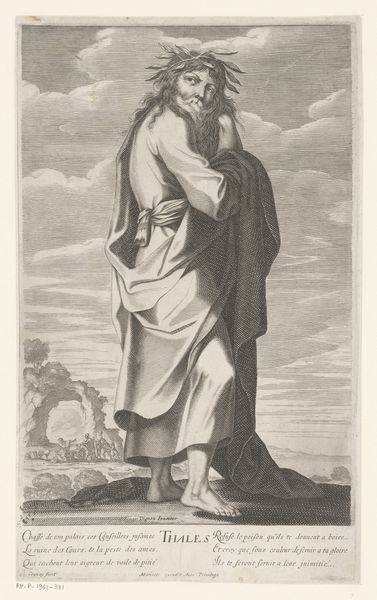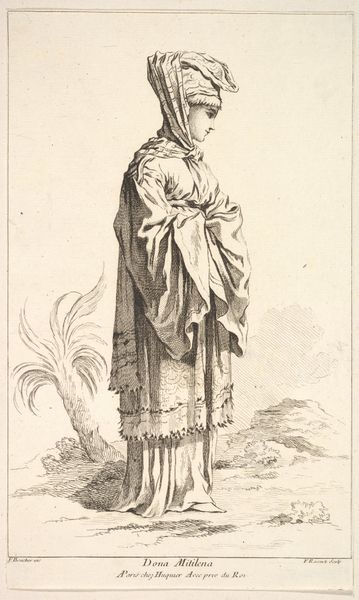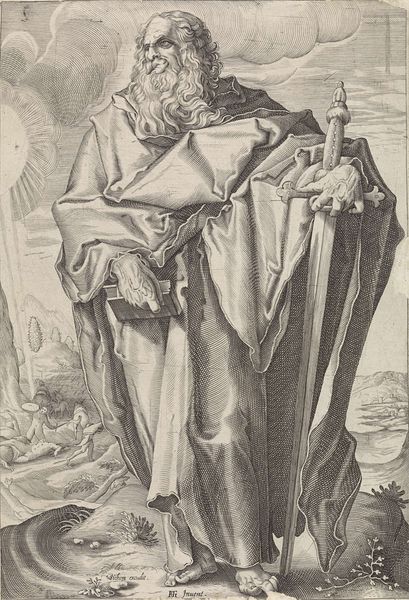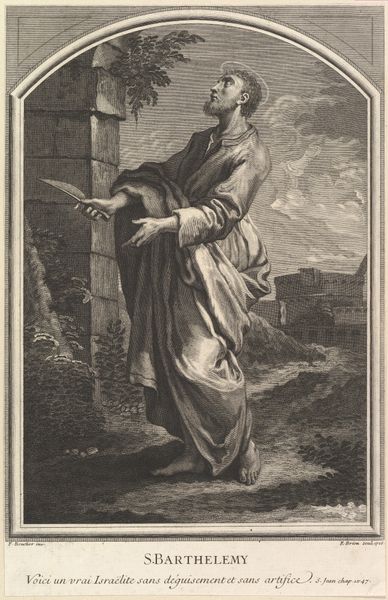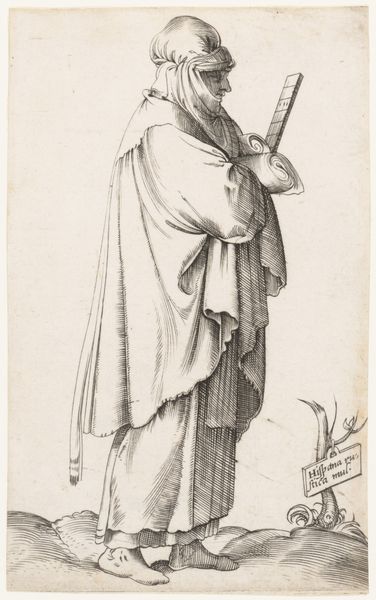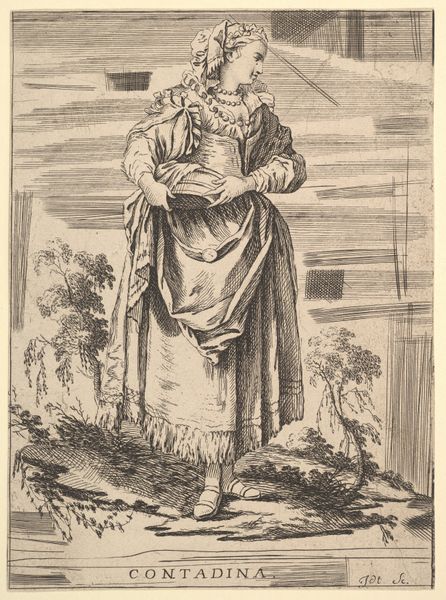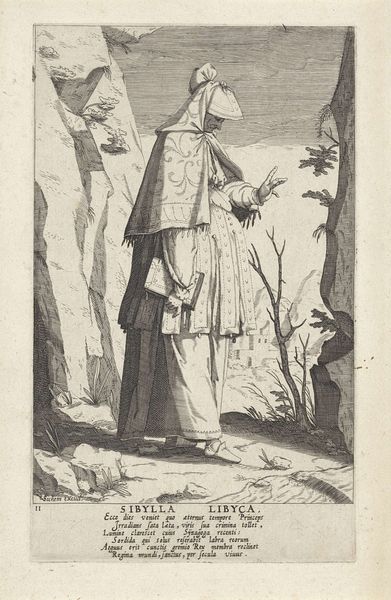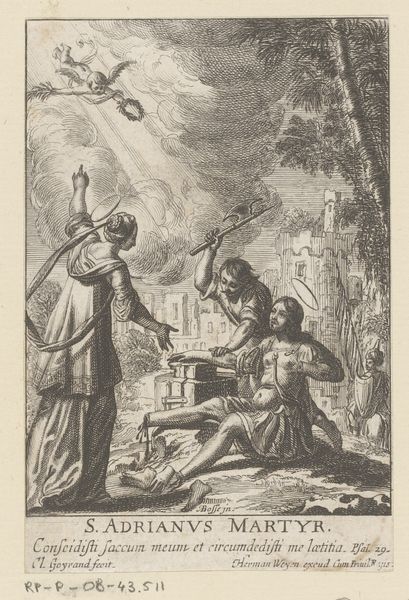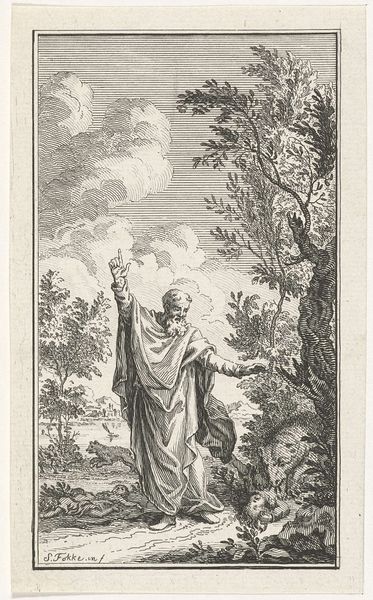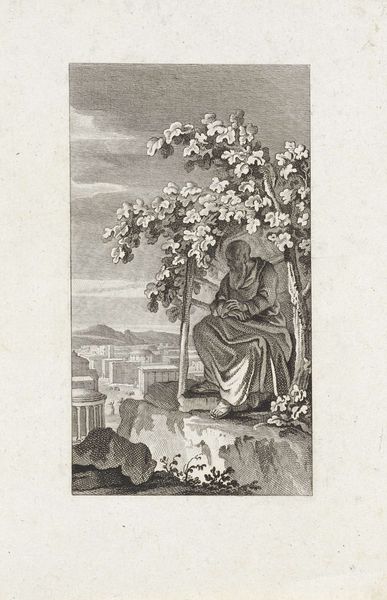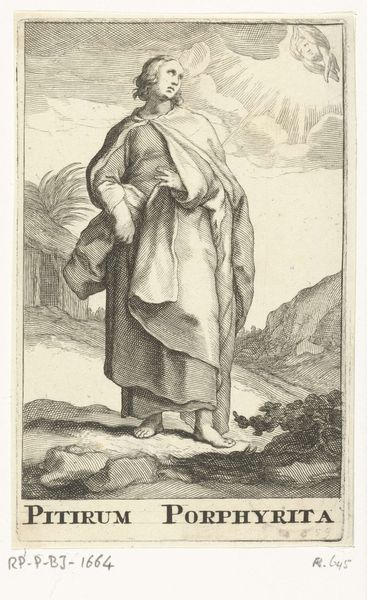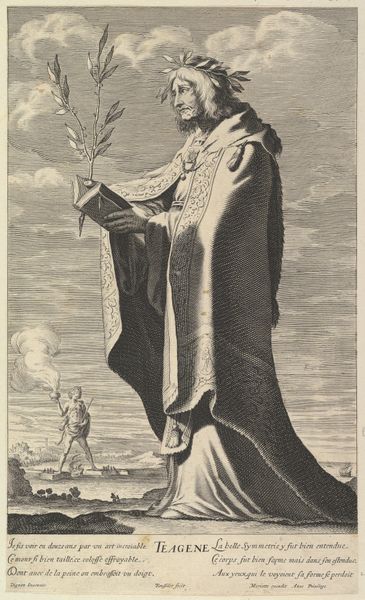
Chinoiserie with a woman playing a flute, from Suite de Figures Chinoises. . .Tiré du Cabinet de Mr. d'Azaincourt (Series of Chinoiserie Figures. . .From the Chambers of Mr. d'Azaincourt) 1755 - 1776
0:00
0:00
drawing, print, engraving
#
drawing
# print
#
old engraving style
#
landscape
#
figuration
#
pencil drawing
#
orientalism
#
line
#
genre-painting
#
engraving
#
rococo
Dimensions: Sheet: 8 3/8 × 5 11/16 in. (21.2 × 14.4 cm)
Copyright: Public Domain
Jean Pierre Louis Laurent Hoüel created this print, "Chinoiserie with a woman playing a flute," as part of a series which was inspired by so-called ‘Chinese chambers’ of French aristocracy. This etching is an example of Chinoiserie, a style reflecting European fascination with East Asia during the 18th century. But it’s crucial to understand this wasn't about genuine cultural exchange. Instead, it was a one-sided appropriation of Chinese motifs, filtered through European fantasies and desires. Here, a woman, presumably meant to be Chinese, plays the flute in a garden that blends European and imagined Asian elements. Look at the way she's posed, almost like a porcelain figure, frozen in an idealized, exoticized role. How much does this image tell us about the artist's perception and that of the patrons who commissioned such works? How does it reinforce or challenge existing stereotypes? These images often served to reinforce a sense of European superiority, turning other cultures into mere decorative elements. Think about the power dynamics at play when one culture represents another. What is gained, and what is inevitably lost or distorted?
Comments
No comments
Be the first to comment and join the conversation on the ultimate creative platform.
